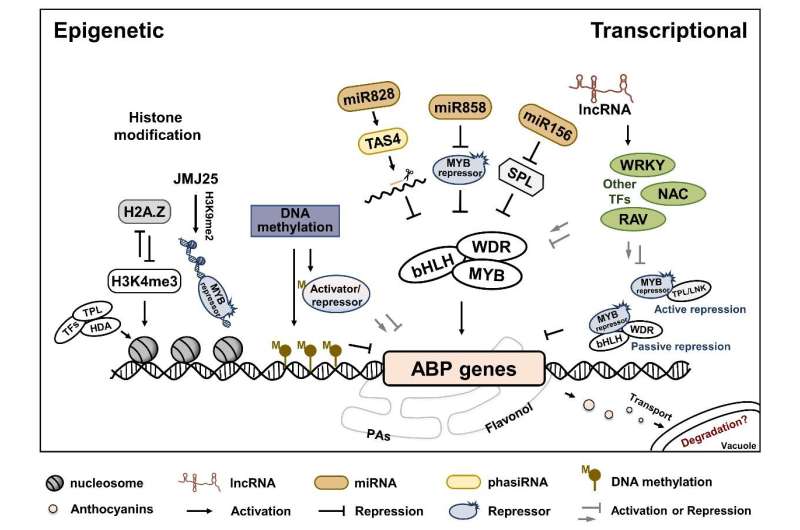This article has been reviewed according to Science X's editorial process and policies. Editors have highlighted the following attributes while ensuring the content's credibility:
fact-checked
trusted source
proofread
Both internal and external stimuli found to control anthocyanin accumulation in fruit

Anthocyanins are important health-promoting pigments that contribute significantly to the nutritional and commercial value of fruits. The anthocyanin biosynthetic pathway is well understood and the key regulatory genes controlling the pathway have been identified in fruits. Anthocyanin accumulation is controlled by developmental, environmental and hormonal cues. Understanding the molecular mechanisms will provide a theoretical basis for genetic improvement and breeding of anthocyanin-enriched fruits.
Under the supervision of Prof. Han Yuepeng from the Wuhan Botanical Garden of the Chinese Academy of Sciences (CAS), Zhao Yun reviewed the latest progress in the molecular mechanisms of various internal and external stimuli on anthocyanin accumulation, as well as networks associated with the orchestration of transcriptional and epigenetic regulation. The results have been published in Plant Physiology in an article titled "Colorful hues: insight into the mechanisms of anthocyanin pigmentation in fruit."
The critical roles of developmental cues, environmental factors, and hormones in anthocyanin accumulation in fruits were presented. Anthocyanin accumulation was organized in a multifaceted hierarchical manner associated with transcriptional and epigenetic regulation.
According to the researchers, the activator-repressor system is essential for anthocyanin homeostasis and temporal-spatial distribution in fruit. Increasing evidence uncovers the involvement of epigenetic modifications in anthocyanin pigmentation in fruit, such as DNA methylation, histone modification and non-coding RNAs.
In addition, the researchers further focus on new discoveries that reveal synergistical or antagonistical effects of crosstalk between different signaling pathways, and search for interconnections between regulatory networks in the form of a simplified model.
They briefly discuss current advances in the regulatory mechanisms of anthocyanin pigmentation in fruit and define a number of open questions for future research.
More information: Yun Zhao et al, Colorful hues: insight into the mechanisms of anthocyanin pigmentation in fruit, Plant Physiology (2023). DOI: 10.1093/plphys/kiad160
Provided by Chinese Academy of Sciences



















